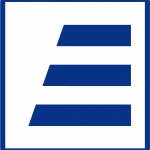The SRED refunds or Scientific Research and Experimental Development program offers a lucrative opportunity for businesses to claim substantial tax refunds. However, maneuvering through the intricacies of claiming SRED overhead expenditures demands a strategic approach. While the popular Proxy Method simplifies calculations, the lesser-known Traditional Method holds untapped potential for maximizing your refunds. Let’s explore how you can harness the Traditional Method to your advantage.
Two Paths to SRED Overhead Expenditures
Most claimants tread the familiar path of the Proxy Method—a straightforward calculation where SRED overhead expenditures are determined by multiplying SRED labor expenditures by 55%. This method is favored for its simplicity and is the default choice for many businesses.
In contrast, the Traditional Method unveils a distinct avenue. It necessitates the identification and reporting of SRED overhead expenditures on the SRED schedules—akin to other direct expenditures such as labor and materials. While the Proxy Method’s popularity is rooted in its ease of application, the Traditional Method offers a potential advantage, especially in specific scenarios.
SRED Refunds Eligibility Landscape for Overhead Expenditures
Under the Traditional Method, the eligibility of overhead expenditures hinges on two crucial tests:
1. Directly Related Test: Expenditures must be associated with SRED activities without intermediary steps. They should be linked to any of the following elements:
- The SRED work
- The SRED staff
- The machinery/equipment utilized by staff for SRED endeavors
2. Incremental Test: For an expense to qualify, it must not have been incurred had the SRED work not been conducted. This could be an expense that either increased due to SRED activities or would have been lower without them. Even a portion or percentage of expenditure directly linked to SRED activities may be considered incremental.
However, fixed costs do not fall under this umbrella of eligibility.
Strategic Decision-Making: Traditional vs. Proxy Method
1. Outsourced Dominance: Software Developer Start-ups In scenarios where external contractors play a substantial role and in-house contributions are limited—typical for Software Developer start-ups embracing outsourcing—the Traditional Method triumphs. It aligns better with outsourced-driven SRED initiatives.
2. Overhead-Intensive Claims: Manufacturing and More Industries with considerable overhead expenses, like manufacturing and food sciences, demand meticulous calculations. Calculate overhead under both methods and opt for the one yielding higher figures. But remember, if you choose the Traditional Method, the generated overhead expenditures must significantly surpass the Proxy Method due to the higher burden of proof.
| Aspect | Traditional Method | Proxy Method |
| Mechanism | Actual overhead and other expenses are added to the pool of deductible SRED expenditures | Overhead and other expenses are estimated by the calculation of Prescribed Proxy Amount (PPA) |
| Deductibility | Overhead and other expenses are deductible as SRED expenditures | Overhead and other expenses are not deductible as SRED expenditures |
| Documentation | Requires explanation of how the amount was determined and provision of supporting evidence | No detailed tracking of overhead and other expenditures needed |
Common Overhead Expenditures For SRED Refunds
An array of overhead expenditures can be claimed, including:
- Employee Compensation: Wages, salaries, and related benefits for those directly involved in SRED endeavors.
- Human Resources Contributions: Employer’s share of associated benefits.
- Operational Aspects: Utility costs, telephone, internet, waste disposal, and more.
- Personnel Development: Expenses related to recruiting, hiring, and training SRED personnel.
- Specialized Endeavors: Clinical studies, insurance, and maintenance costs.
Conclusion
The Traditional Method’s potential lies beyond the surface simplicity of the Proxy Method. By strategically choosing between these methods, you can magnify your SRED refunds. As you navigate complex outsourcing dynamics or venture into overhead-intensive sectors, informed decisions pave the way to optimal returns. Our Tax Team at EVAMAX stands ready to guide your path—ensuring that your SRED endeavors not only meet compliance standards but unlock the full potential of SRED refunds optimization.



